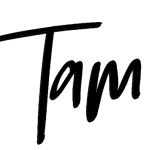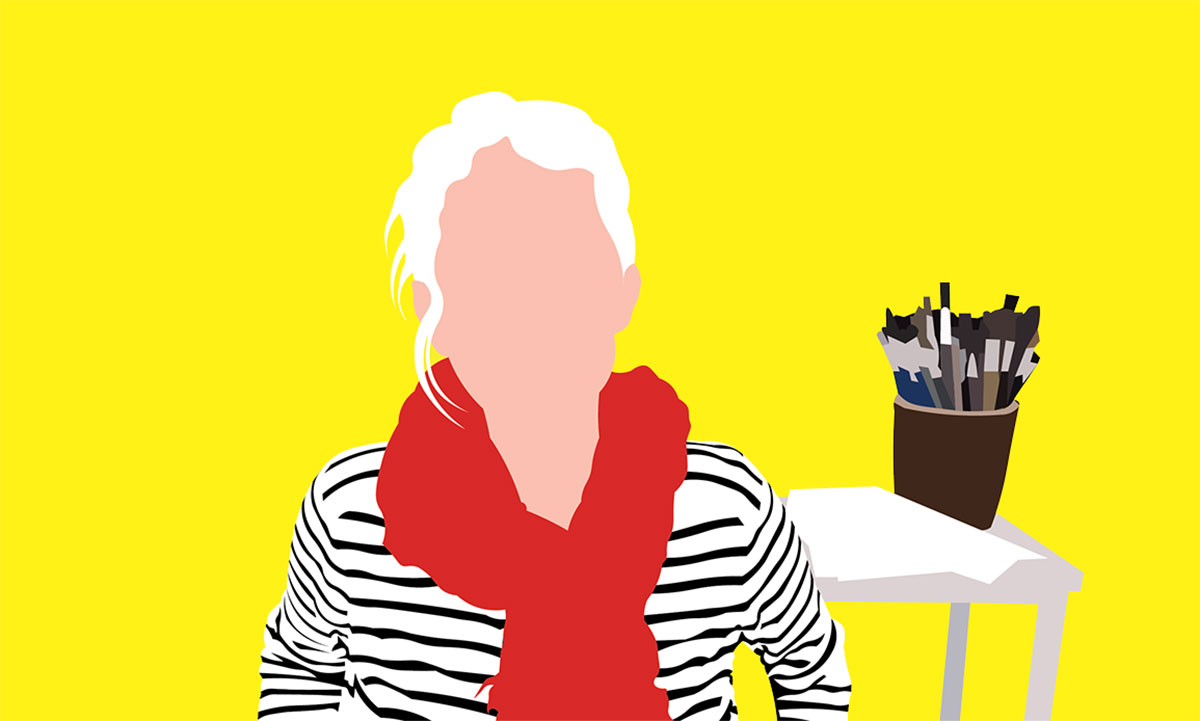
Story | Ingrid Lill Discusses Visual Thinking, Business Storyboarding, and Finding Your Superpower
If you have never considered using visual thinking to solve your problems, there is no better time than now to change that. I figured that there is no better way to start the new year than by sharing with the world one of its best-kept secrets — the gem that is Ingrid Lill.
Who is Ingrid Lill, you may ask? Ingrid is the person you turn to when struggling to pin down that one special thing about you and your business. She’s the person you seek if you are trying to figure out your superpower.
Visual thinking can be a vital tool for effectively developing and communicating your ideas. Armed with a unique set of skills and an interesting story-driven framework, Ingrid can help you express your message through a visual process. She shows you how to see words as pictures and connect the dots. In one session, she can help you to sketch the big picture of your idea so you walk away with clarity, a fresh perspective, and a master plan to communicate.
I stumbled upon Ingrid Lill’s website about a year ago and immediately devoured all she had to offer. After all, I love visuals, and Ingrid serves them up in an easy-to-digest way.
Through her Brand Storyboarding sessions, Ingrid uses her magic wand — her pencil — to help coaches, consultants and creatives find clarity. She makes it easy for you to see yourself and your business with fresh eyes by using visual thinking.
By trade, Ingrid is a communication designer-turned-business coach who loves all things visual. She describes herself as a business coach with a pencil, but as you are about to learn from my candid conversation with her, she is so much more.

LISTEN: Full Interview Available on Audio
You describe yourself as a business coach with a pencil. Can you explain what you do as a visual coach using visual thinking?
Yes. I used to be a graphic designer and an art director and I did communication design, making websites for people. What became apparent to me is that my clients weren’t as clear as they should be for good communication. We can go into my story a little bit later, but I noticed that when I think through problems or what I want to say, I always make scribbles because of my visual background. I found out that it helps my clients to see their problems, what they’re doing, or their ideas laid out visually on a piece of paper. Before they do a website or communicate something, [it helps to] get clear about the various pieces, how it all fits together, to see the big picture of their business or their brand. Many people I work with have many ideas and don’t know how to connect them all or what to focus on.
Did you choose your career path or did it choose you? Can you briefly give us a bit of your background, starting with what type of career you wanted to pursue when you were young and how you got to where you are now?
When I was a child, I was an artist or a magician or a storyteller. I did nothing but paint, talk, tell stories, draw stories and invent toys and stuff; this was just me. Then for some stupid reason, if somebody’s interested in creative stuff, they get put into the art drawer, and everybody told me, “You can’t make money as an artist.” So I tried to study something reasonable when I was finished with school. I always loved drawing and all things visual, but I didn’t have any idea what to do with it. And I started studying law. I can recommend to anybody who is creative and doesn’t know what to do, to try to study law. After two weeks, I knew this was not it for me, and I needed to do something creative…it was crystal clear. So I don’t see those two weeks of studying law as wasted, because after that, I knew what I wanted. I did some research and I found out there’s something called visual communication. That was a hundred years ago. I studied in Germany and then I tried out many things throughout the years. Until not that long ago, maybe four years ago or five, I came back to my original love of drawing and storytelling, so it’s like a full circle. I feel like I’m doing what I have been doing since I was a child, and that is telling stories and drawing and making magic and putting stuff together, and it’s fun.
That’s awesome. Are you originally from Germany?
Yeah, I’m from Germany and then I lived in various places in Spain, and now I’m in Denmark.
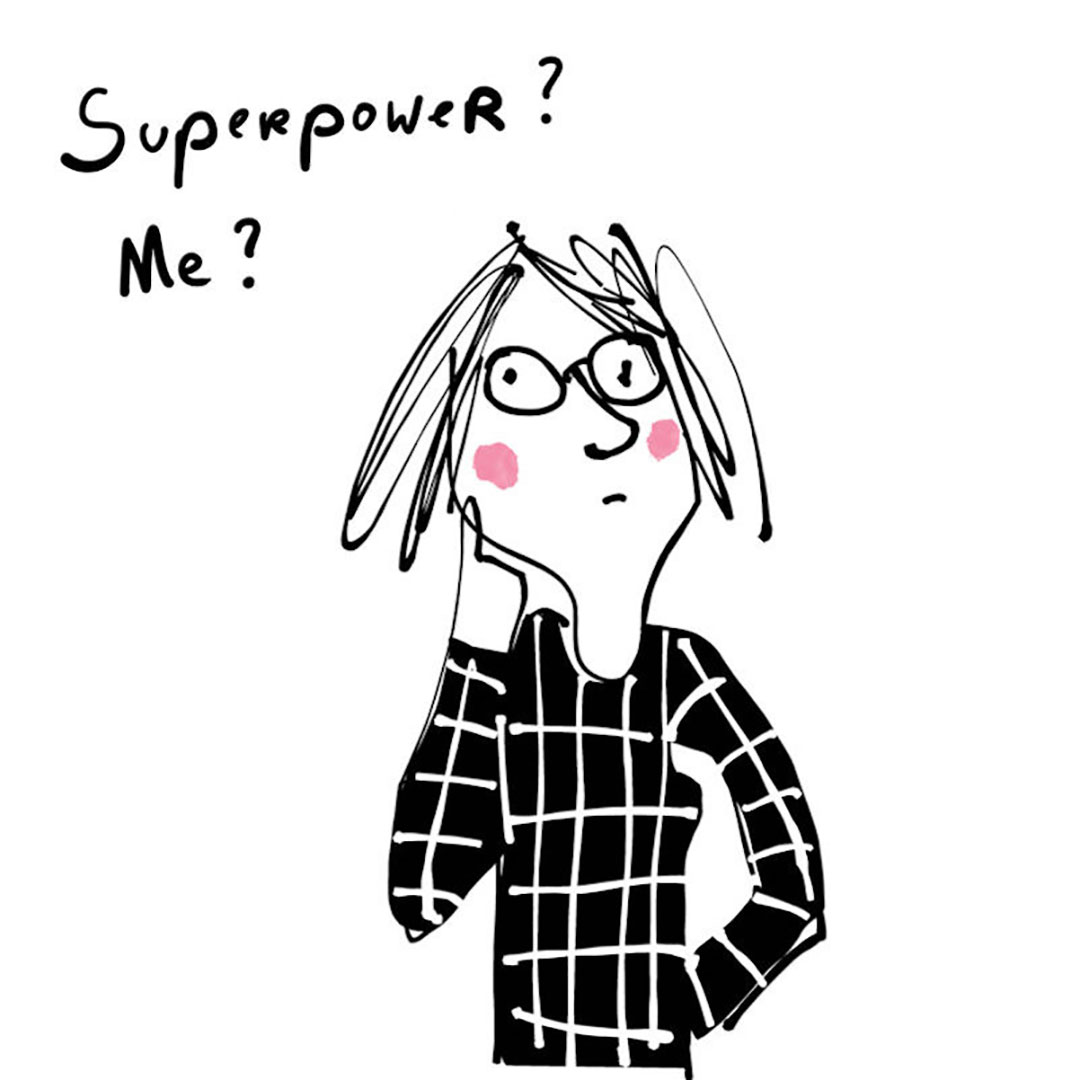
You have helped people get unstuck and move forward. Reading reviews from people you have worked with, your strength seems to be helping people find clarity, which is what this podcast is all about. What do you believe your superpower is?
My superpower is actually ‘listening.’ Listening to the story beneath the surface that my clients are telling me. I try to listen for a theme, a topic that goes throughout. Some people already know what they want to do, and they just need help communicating it. Some people don’t know what to focus on, and I have developed various visual models [to help them], because I’m thinking visually, so I’m drawing it all up and then I’m composing a story. Then I’m drawing a picture of their story, and I can see and feel if it’s round and beautiful or if something is missing. And for them, it also helps to have their ideas, but we do that in real-time. So on Zoom, I talk with them and I share my screen and they can see what I’m drawing.
I know you draw for other people. How has drawing transformed your business?
Well, I haven’t been drawing for many years, just a little bit for fun here and there, but I didn’t dare to do illustrations for my own business. I was a graphic designer and I used stock photos like everybody else, because I thought I wasn’t professional enough or good enough. It didn’t even occur to me to use drawings professionally. And then I discovered graphic facilitation, which is when you’re at conferences and people draw these pictures of what they’re hearing, and I thought, “This is fascinating.” I looked into that and that’s how I rediscovered drawing — that drawing doesn’t have to be art: it can be simple and it can be about communication. Then I did that, or I’m still doing it, if somebody wants it at seminars or a conference. But it hasn’t happened during COVID at all, so now I’m doing it online mostly.
I think everybody is creative, but there are people like you who are exceptional at creating things, and then there are people like me who have a lot of creative ideas, but I also know I’m very analytical. I’m business, but I’m creative, so I consider myself a hybrid. I actually own the trademark for Sincerely HER, for the name, and for many years I had this thought: “Okay, I want to do something that consists of drawing, but I don’t draw.” I discovered you when I was looking for someone to draw. So there is a business, as you know, in creative illustrating and storyboarding.
I do illustrations, but I don’t want to brand myself as an illustrator because I don’t want to do anything that doesn’t make sense. Therefore, I developed this framework and wanted first to find out what the business is about, and then make the drawings. So first I look at who this client is, what are they suffering from? And now we’re in my service already. It’s called brand storyboarding…I draw what is happening in the business, like the previous clients and what they’re suffering from. What is their pain, and how do they feel? What is the biggest problem in the world for them? So that’s something I’m drawing, and I’m also doing a lot of writing.
Yes, because I enjoy all your emails.
Thank you. Then I draw their vision on the right side. What they’re dreaming of. What is a paradise for them? What do they want in the future? Once I know that, I know how the illustration has to look. Before that, it’s a little bit more vague, or can be a lot more vague. This is my process.
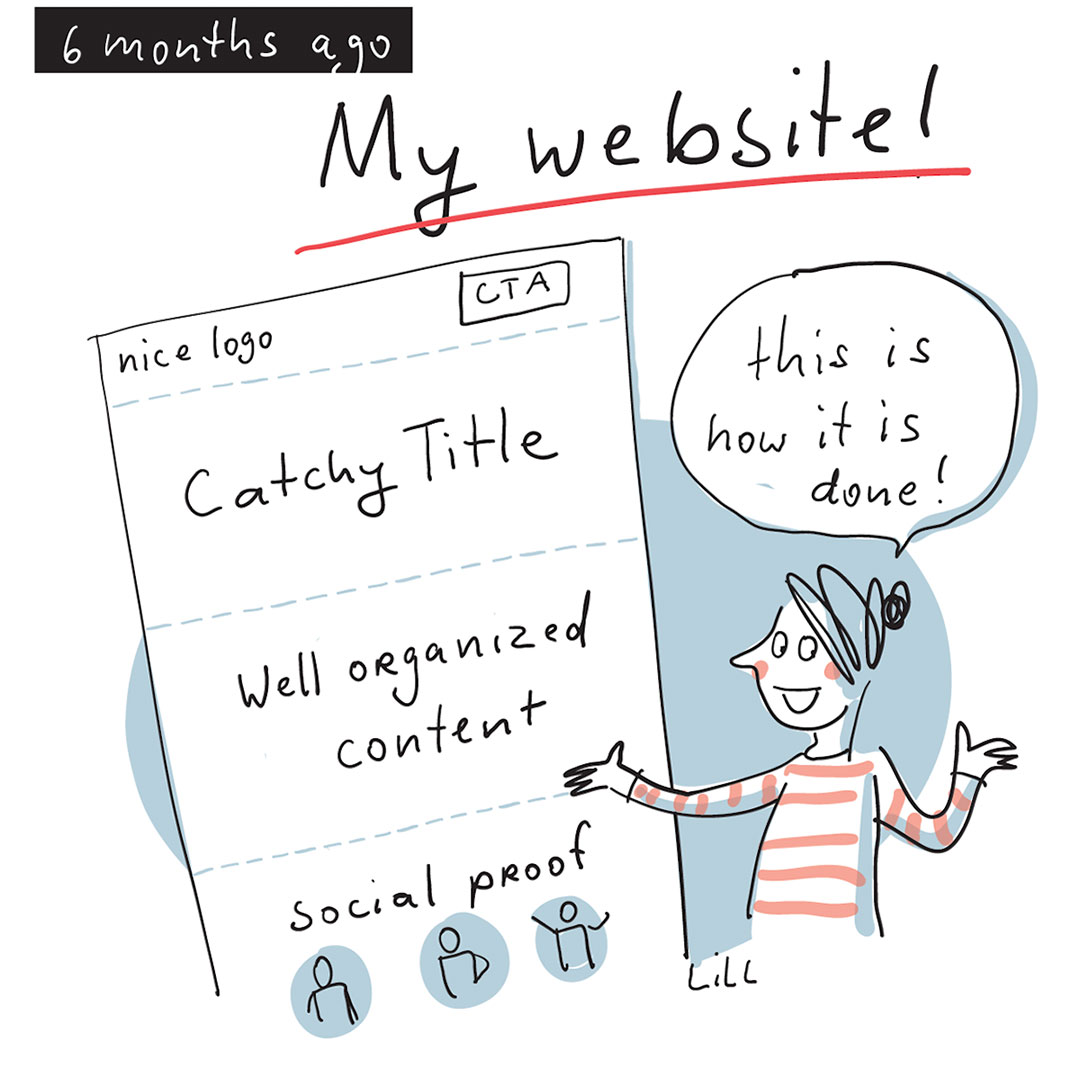
I’ve actually seen your transformation with your business and how you’ve changed your website. You have adopted Donald Miller’s storybrand framework. I’m a big fan of Donald Miller, I actually have his book right next to me. In your storyboarding sessions, what key strategy do you use to guide your clients from their problems to a solution?
First I find out who their clients are and what their clients are suffering from, so I reverse the perspective. Donald Miller has been a big inspiration for my work and I tried to apply it to my own business, but I couldn’t do it, I just couldn’t wrap my head around it. But when I put it out on paper, I could see it from outside in a way, and that’s what I’m doing now. It’s so difficult to see our business from the outside.
Yes, it is.
You need a mirror, and either a coach or somebody who is just reflecting what you’re saying, or you can draw it yourself. It can be a stick man — it doesn’t have to be intricate, and my drawings are also pretty simple. So you can just draw your client, a stick man to the left, and what their problem is, and then you write a few words. And for some reason, I really think it helps if you have the problem as a drawing. It’s like an anchor you can go back to. If it’s just a bunch of words, then it doesn’t tell me so much. But if I have a visual anchor then I can see, can this person in this situation hear what I’m saying? Do they understand the name of my product? Do they want to learn about something or do they just want to lose weight or whatever it is? So yeah, I can recommend it. It doesn’t have to be a complicated drawing.
I read, I believe, almost all of your blog posts, because when I first discovered you, I bookmarked you, and then I went back. I hope that didn’t sound creepy.
No, it’s great. I don’t even have analytics installed on my website, so I don’t know if anybody’s reading it.
Is there something specific you do to get your creativity flowing?
I sit down and wait. It helps if I have a deadline, and it helps to do it every day; regularity is really important. The problem for me is not to get my creativity going, because this is kind of overflowing. The bigger problem is to select, what is it I want to concentrate on and what do I want to work on today? Because, like my clients, I have too many ideas and yeah, that’s common. It really helps me to write almost a daily email to my list — and I admire everybody who stays on the list, I get good feedback — and I do that as a writing/creative practice for myself. I also started, about a year ago, posting on LinkedIn almost daily, which is also great because you get immediate feedback on what gets more resonance. It takes some time until the algorithm notices you, but this regularity helps to develop your voice and find out what you want to say. This is a big part of the business. You have to publish your ideas unless you just want to be a best-kept secret.
My business also worked before I did all that, when it was all word of mouth. I got jobs that were sometimes interesting, and sometimes not. Until I got a job that was not so interesting. I thought, “I’m getting too old for that, I want to do something more interesting. I don’t want to waste my life making a brochure that doesn’t interest me,” and that’s when I started, for the first time, posting every day on Facebook with diary drawings. That’s how I got into the drawing habit. And maybe for somebody else, it’s not the drawing habit; maybe it’s the singing habit or the speaking habit, or talking about your topic habit, but you don’t know what you want to say unless you start talking.
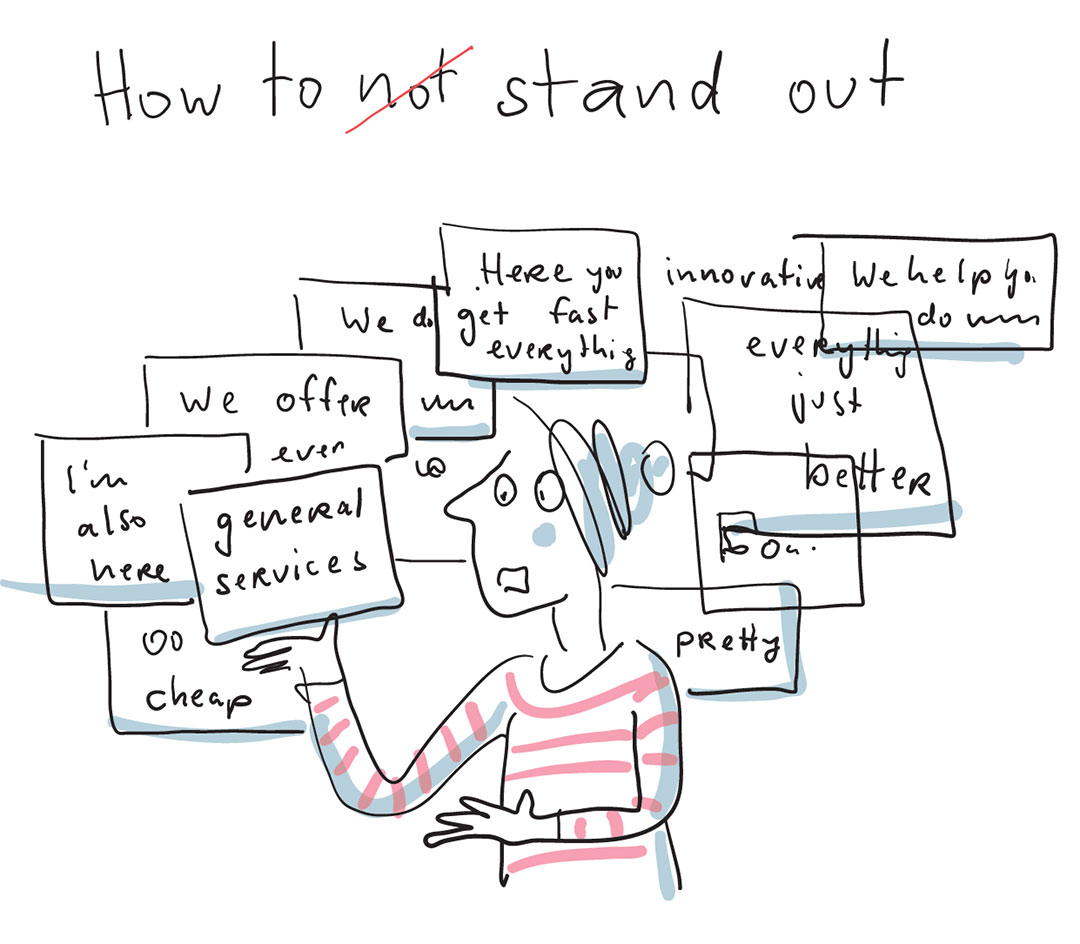
This is true. You’ve mentioned LinkedIn. What’s the biggest no-no you see creatives making, whether on social media, LinkedIn or their website?
I don’t know about no-nos, but I know that a lot of stuff is boring. There are some people who are very successful with their social media who don’t interest me. I go for being authentic and not trying to appear as something that I’m not. I think this is terrible and boring, and maybe they make money with it, but it’s not something that interests me. Making money does interest me, but to consume that content… I also get clients from posting, so it’s fun, and it helps me develop my voice. It’s a creative practice, and people started noticing after some time. I do have a big no-no by the way, and that is to have a profile that talks only about you. The profile should be storytelling and show your ideal customer/your dream client how you can help them. That’s what business is about.
That’s very much Donald Miller. You’re the guide, and your client or customer is the hero in the story.
Yes, the guide, the inspirator, and helper.
Speaking of guides, did you or do you have any mentors? If so, who? And if not, who, in your head, would be your ideal mentor?
I bought Donald Miller’s course when it still was expensive. I also had a story brand guide look at my business, but yes, I had several mentors. The last group I was in, or am still in, is Marketing For Hippies by Tad Hargrave, who I think is wonderful. It’s not the typical marketing speech that I can’t stomach. Another one that is not so commercial, and that I will look more into, is George Kao.
LISTEN: Full Interview Available on Audio
I’m not familiar with him.
He’s about authentic business.
Do you follow Seth Godin?
Yes of course, but I didn’t want to state the obvious. He’s great. I also did some of his storytelling courses.
Everyone comes to you, it seems like, to help with their business. Who is the one person that you bounce ideas off of and why? Do you have that go-to person for yourself?
My husband. He often doesn’t want to talk to me about it, but yes, if it’s important, he’s willing to listen.
What’s the best advice you would offer someone who is struggling with how to market their services?
Talk to your clients; find out, what is their problem? What do they need, like similar products or similar services? This is actually how my brand storyboarding was born. I know that drawing is so helpful, and I thought, “I have to teach drawing.” I do have a drawing class, but I thought maybe I could do some one-to-one coaching for people who really want to use drawing in their business. I talked to someone that I met on Facebook who said that they were interested, and it turned out that they weren’t really interested in learning to draw. And then when I talked with this one woman, Stephanie, I found out that she didn’t know what to draw — she wasn’t clear. Then we reversed it. We were on Zoom, and I showed her my paper and I started drawing, and that’s how it started. It was a customer conversation.
Oh, interesting. What’s been your biggest challenge transitioning from being a freelance graphic designer and art director to now, a business owner?
I didn’t really know what a business was before all this — how much time you would have to spend on marketing or communicating and just making yourself visible. It takes a lot of time and it’s less important than client work. Now I know that if I want the client work that I want to do, I just have to do the same thing for myself. So I’m now using at least as much time on my own business as I do on clients’ stuff.
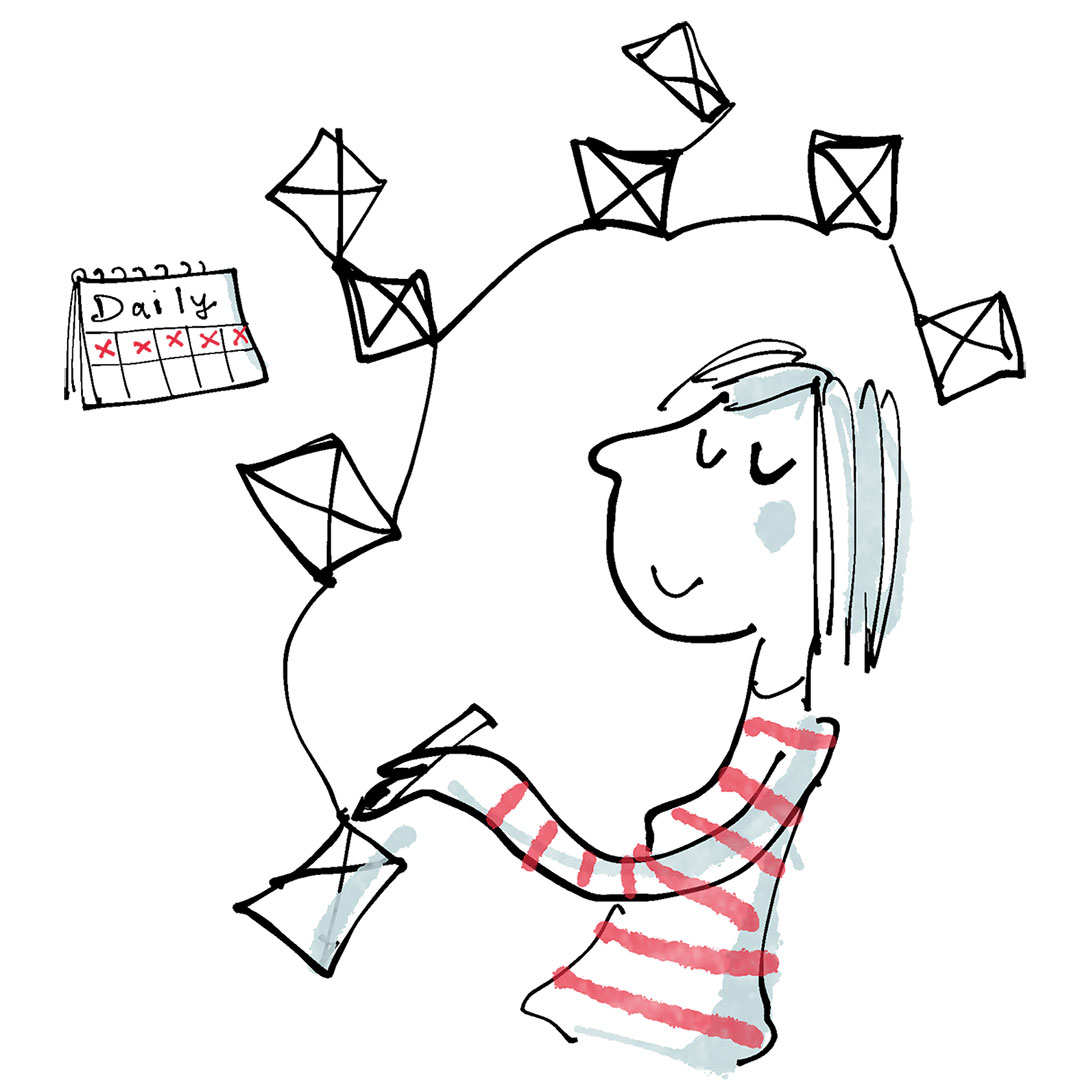
Looking at your drawings, your creativity is very vivid. How does inspiration flow to you? Is there a process, do you meditate, visualize, do you look through magazines? What’s your process?
I don’t meditate, but I go for walks and I do yoga. I do sit too much at my computer, and you can’t avoid being bombarded with visual inspiration. I also think it’s about not looking at too much stuff. I do that also, and that’s why I hate being on Instagram, because there’s too much there. So I’m not really browsing Instagram. There are so many people there who are great in some way, and I think, “This is something I could do, and this is something I could — oh, I should try that too,” and it’s distracting.
Yeah, shiny objects syndrome.
Yeah, and I decided at some point, I do this black line drawing and one color or two colors and keep it simple, and sometimes I try something else. I also do art: typically I build weird dolls, and I paint, and I do light projections at street events here locally.
Oh, those are awesome. One of my longtime clients, we had a business together. And for some of the events, we would have light projections. We would do our logo and different catchy phrases. I love that.
And what I’m doing is drawing people who come by, like really quick sketches. Then I talk with them. That’s what I do online also. I talk with them and do a little portrait, and then I ask if they have any messages to the world, and I write it there. I draw on my iPad and it gets projected big onto the house wall, or the museums here.
As someone who has talked to so many entrepreneurs and business owners about building their personal brands, what makes a great brand?
Oh, there are a thousand ways. I can say, what I think is interesting is authenticity: this is one of my big things. I’m not interested in these brands who push out and are about money only.
Let’s phrase it a different way. What’s one crucial element you believe makes a brand popular, what gets your attention first?
If there’s some kind of uniqueness or if it’s focused on something. It can be really heartfelt or it can be really quirky or serious. I think a brand is interesting if I can feel who it is, who’s talking. No matter if it’s one person or more people, it’s brand voice. Brand voice is clarity.

What advice would you offer a creative person if they were searching for things they could do now that would set them apart to be successful?
One thing is finding your strengths, and these might not be obvious to you. This is probably something that’s easier to see from outside. And use them, don’t concentrate on all the shortcomings. The other thing is to really look at what is difficult for you or what has been difficult for you. I think the riches are there. For some weird reason, I’m now doing all the stuff that I thought I’m bad at. I didn’t know what to do at all with my life, what to focus on and concentrate on, and now I’m helping people to get clarity because I had to somehow work my way through. I know how it feels and how to get out of it. The other thing I’m making money with, or I’m doing, is teaching easy illustration as business drawing, even if you think you can draw. As I said, I thought for the longest time that I can’t draw well enough to use it professionally, and that’s what I’m now teaching.
When did you have your “Aha!” moment about everything?
My life is a constant aha moment, but about the brand storyboarding, it was this moment when I talked with Stephanie, who wanted to do a coaching business, and then we reversed the roles. I didn’t want to teach her to draw anymore, instead I did what she was telling me. This was an aha moment. They don’t have to learn to draw — I can draw.
You have worked with business owners as a graphic designer, I know you’ve done a little bit of web designing, and you’ve done some illustrations. What’s the biggest goal you’ve set and accomplished? Because sometimes we do things and it just kind of flows, but what was actually a goal that you set for yourself and you actually accomplished it?
I wanted to do something that is fun and doesn’t feel like work and energizes me; that was my goal for my work life, and to make money doing that. I have accomplished that, and of course it can be more and I want to grow and reach more people, but I’m actually proud of that.
What motivates you to keep going?
Because it’s still fun and there are so many things to explore. That keeps me going, and also my clients. I love them all. For some reason, I only seem to attract great people — probably because what I’m doing is a little bit weird and more unusual. So people who are attracted by what I’m doing are on my wavelength.
Yeah, great people attract great people.
Thank you.
LISTEN: Full Interview Available on Audio
What advice would you offer someone that is scared to take the leap? I ask this question because I remember a blog post that you had about taking the leap. Those people who have great ideas but are afraid to pull the trigger — what advice would you have for them?
Start small and publish something. I mean, it depends on where they are, and what the leap would be for them. For some people it’s to become visible, and that means posting on social media mostly, or reaching out to whomever it is. For some people it is putting an offer out there. If you want to try something new, you don’t have to rebuild your whole business: that’s not what I’ve done. What I did is I created this offer, the brand storyboarding, and put it on my website. First on a side page, but then quickly on the starting page, and it was just one product that I was offering, one service, and then I built my branding around that.
You have said “Publish your work” a couple of times while we’ve been talking. Are you familiar with Austin Kleon?
Yes.
Okay, he has the book Show Your Work. I actually have all three of his books. I think in another life I should have been an illustrator. I’ve always been…I don’t want to use the word captivated, but I just love packaging and drawings and illustrations, that’s kind of my thing. But yeah, I don’t know why people are afraid to show their work. I know you mentioned that…
I was so scared of showing my work, and I remember the first time that I showed a drawing, it was in a discussion about being in the now, something spiritual that was discussed. I had a drawing that fitted perfectly into this discussion, just a simple drawing of a girl balancing on something, on a spike…like a diagram. And I thought, “This would fit here, should I post it?” I posted it just as a comment on a Facebook discussion, and my heart pounded and I don’t know why. I mean, what was a big deal about that? But yeah, it was the first time I posted an illustration, and it gets better, it gets easier to be visible.
Yeah, it’s a mindset thing. Many entrepreneurs and business owners lack the proper mindset to succeed. Can you offer one mindset tip that has helped you?
Yes — ignore mindset, just do it and practice and make the decision to post. Nobody sees it anyway in the beginning, because it takes some time until the algorithm notices you.

I hate that word “algorithm” sometimes, because we’re of the age where we didn’t know much about the algorithm.
Yeah, and now it’s such a big thing.
Yes. What’s the hardest lesson you learned from running your business and working with clients one-on-one?
Well, you need a lot of clients to make a living, and that’s bookkeeping, so know your numbers. This is not my strong side. Then at some point, you have to pay taxes. Don’t ignore the numbers. But it hasn’t been a hard lesson, it’s just something that I don’t enjoy doing.
What’s your next move? We expect to see you teaching more classes or expanding from one-on-ones, but in five years, where do you see yourself?
I actually want to do the same thing that I’m doing now, because I love doing it. Maybe something else presents itself, but I just love it. I also have this group, and maybe if my business grows then I can take more one-to-one clients, because that’s limited now. Then I want to do more group stuff. And I have this little business drawing club where we draw, but we also do business coaching.
So you’re doing group and one-to-ones, but you’re perfectly happy.
I love both.
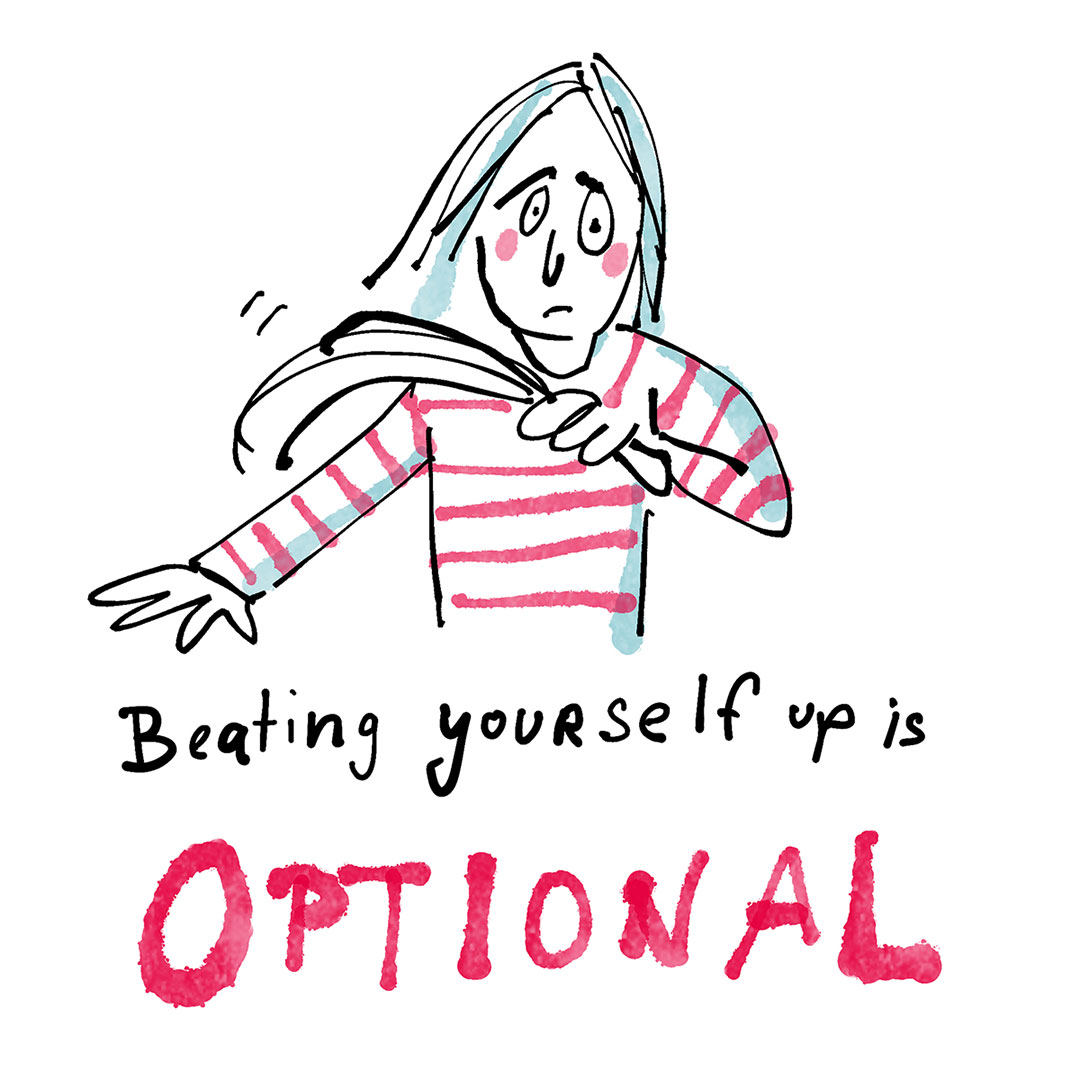
What advice would you offer struggling creative entrepreneurs?
It depends on what they’re struggling with, but draw your business. Make a diagram of it, put it out on paper. Because if it’s all in your head, it’s difficult to get an overview. That’s what I have to do when I’m struggling with something: get it out of my head and move it around. Sometimes I use scissors and I cut it up and make a collage out of whatever problem I have. I don’t know if you saw that — I have one exercise, the ideal day, the day in paradise, with scissors and glue sticks. In order to get to your “ideal day” vision, it’s easier to draw the day from hell. So you draw yourself with all the problems that you have, and then you just cut it in pieces, destroy it — but not destroy, destroy — and then reverse it on a new piece of paper and take yourself in the middle and convert every single item. Too little money, the wrong client…you just turn it around and do the opposite. Find the opposite and draw it on a new piece of paper, and then you have a goal to work towards.
I have this thing that I like to have my day planned for the next day. It’s kind of like a rule of thumb: never go to bed without a plan for the next day. How do you operate?
This is actually something that I need to learn.
Okay, so you just free-flow every day? Obviously, I’m sure you have some plans.
I do have a plan, but I don’t always stick to it. And I read a great piece of advice the other day which is, don’t have more than three things on your to-do list because you won’t manage more anyway. So I think this is something I’m going to implement. One of my three things every day is to post something on social media, and that is not just my breakfast or so — I try to say something.

You don’t write them in advance, you write them each day? Interesting.
I have lots of content. I could just schedule it and I will probably also, at some point, pay somebody to do it for me, but I like the act of creating something in the moment every day.
That’s exhilarating. What would people be surprised to know about Ingrid?
I don’t know. I’m tall.
How tall are you?
I’m six feet. People are usually surprised when they see me in real life.
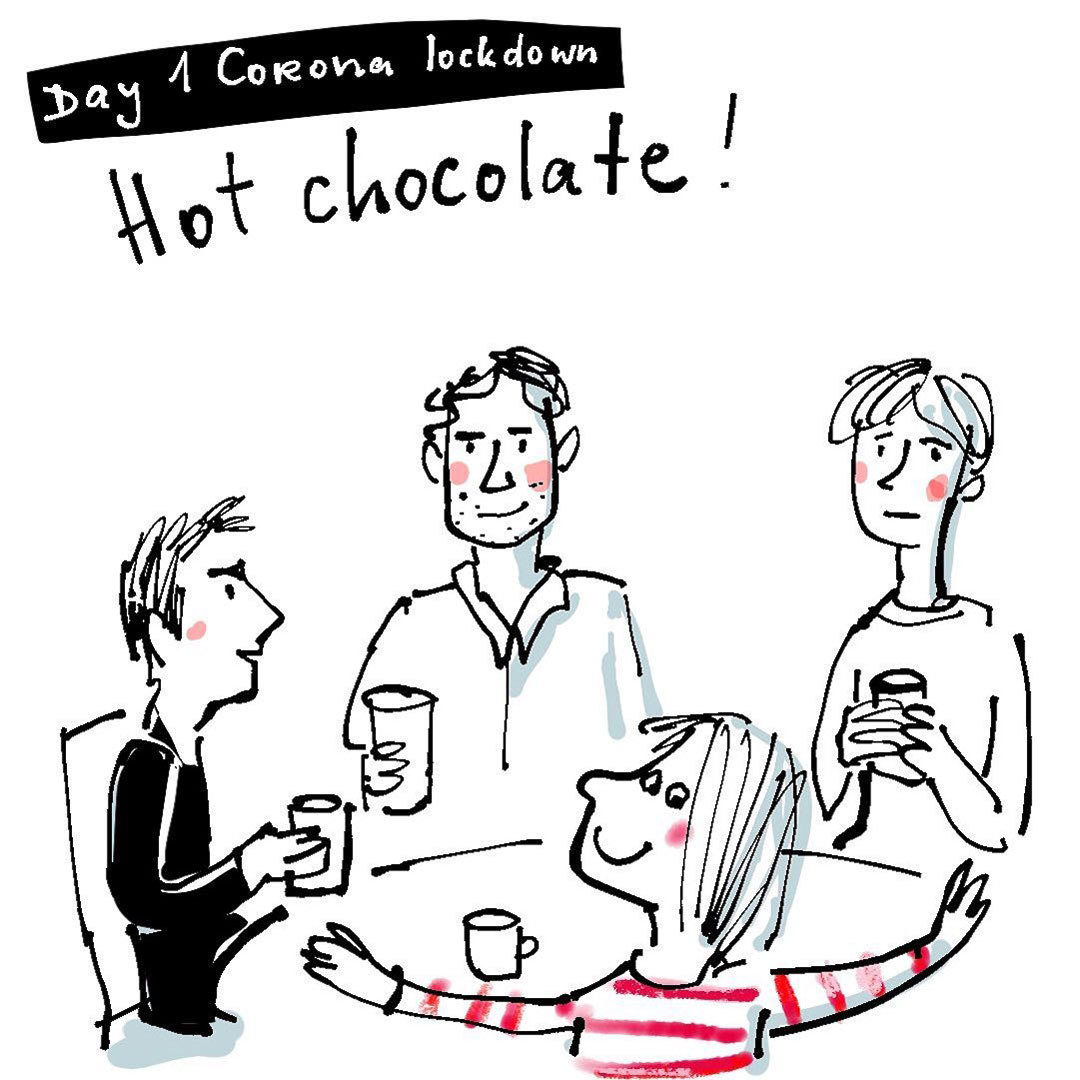
And your husband is how tall?
I’m the smallest in the family. My two sons and my husband are all taller than me, so when we walk around, it’s like towering over others.
Thank you so much.
Well, thank you. Thank you for getting up so early, it was a lovely interview. You’re a great person.
Disclaimer: The transcript above is from an interview by Sincerely Tam with Ingrid Lill, conducted for the Sincerely HER Podcast. The interview was edited for clarity and brevity.
LISTEN: Full Interview Available on Audio
